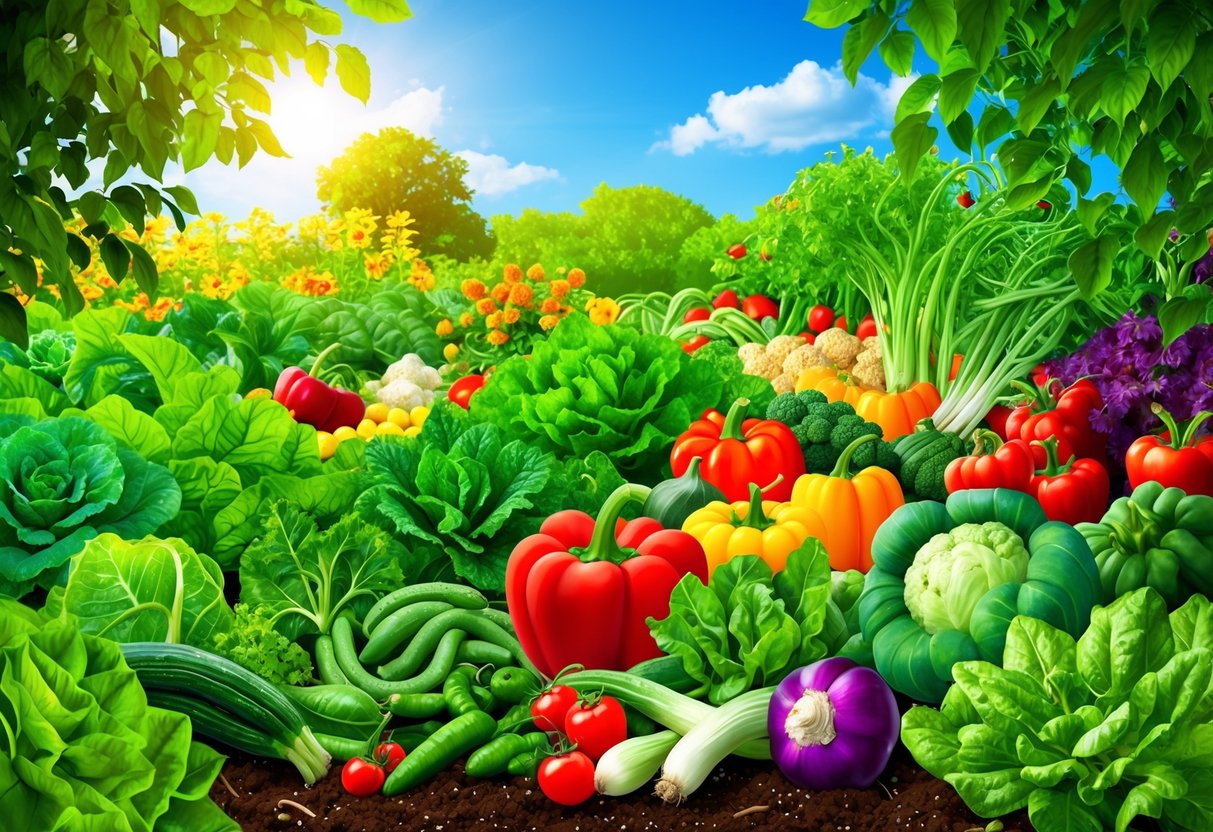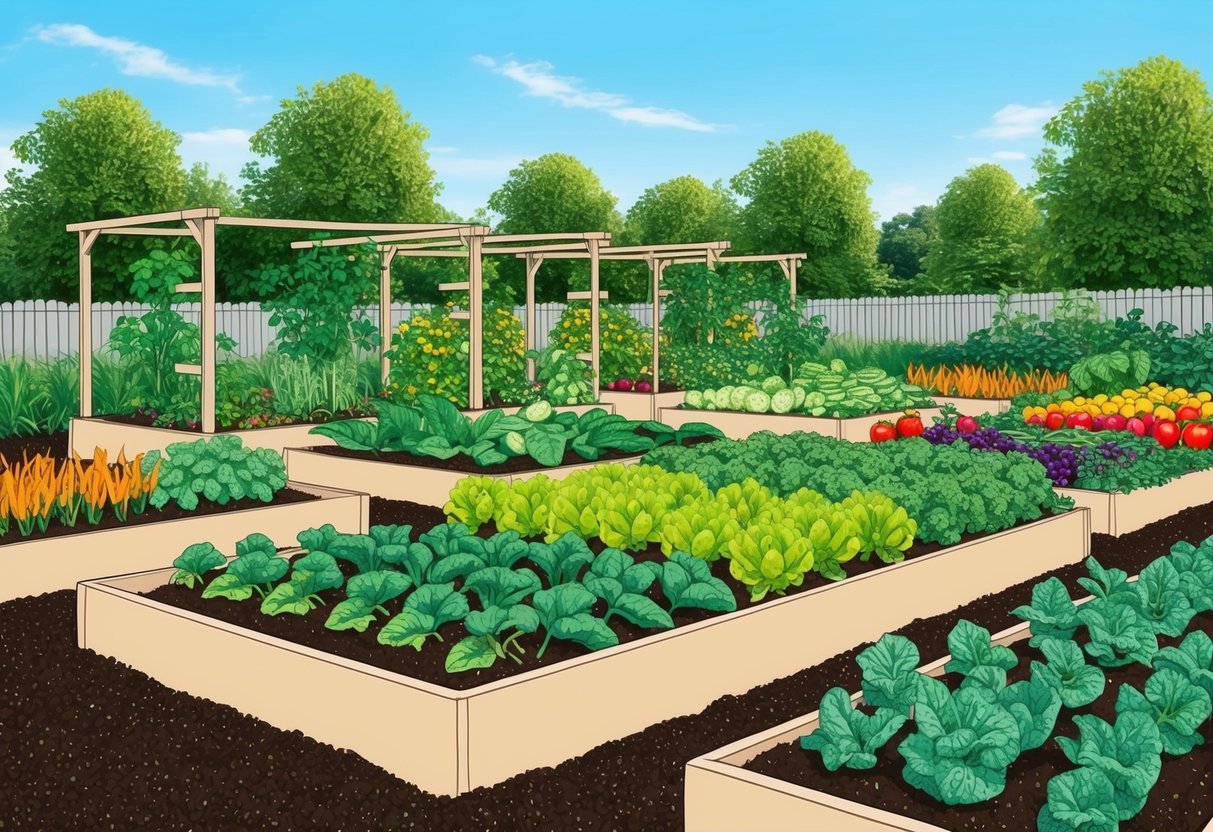
Growing gourmet vegetables at home has become more popular than ever, offering gardeners fresher, more flavorful produce while maintaining control over how their food is grown.
Home gardeners have the opportunity to focus on varieties chosen for exceptional taste and nutrition, not just shelf life.
By learning a few simple organic gardening techniques, anyone can harvest restaurant-quality vegetables packed with flavor and free from harmful chemicals.
With the right approach, even small spaces can produce impressive yields of specialty crops like heirloom tomatoes, gourmet lettuces, and unique peppers.
Choosing the appropriate growing method, such as raised beds, pots, or traditional in-ground gardening, helps maximize results for any location or skill level.
Various guides offer step-by-step assistance on choosing soil, seeds, and growing methods, ensuring a successful start to the season.
Attention to soil health, watering practices, and proper variety selection can make a significant difference in taste and quality.
For those seeking deeper flavor in their harvest, focusing on techniques found in comprehensive gardening resources helps grow vegetables that stand out from anything found in a grocery store.
Choosing Gourmet Vegetables for Home Growing
Cultivating gourmet vegetables and herbs at home offers gardeners unique flavors, exceptional nutrition, and the satisfaction of fresh harvests on demand.
Success starts with understanding which varieties offer the best taste, knowing the differences among popular greens, and integrating specialty herbs and edible flowers for a complete gourmet experience.
Selecting Varieties for Exceptional Flavor
Flavorful harvests begin with the right varieties.
Heirloom and heritage vegetables are prized for taste rather than shelf life, making them popular among home gardeners seeking gourmet results.
Varieties such as ‘Brandywine’ tomatoes, ‘Chioggia’ beets, and ‘French Breakfast’ radishes consistently outperform supermarket produce in terms of aroma and sweetness.
Soil health and harvest timing both impact the final taste.
Pick crops like carrots and lettuces at their peak for maximum flavor.
Home growers should also look for vegetables bred specifically for flavor and nutrition, which often include lesser-known salad mixes containing arugula, mizuna, and corn salad.
Growing conditions play a crucial role.
Proper sunlight, watering, and organic fertilization help bring out the best in gourmet vegetables.
The extra care pays off in richer taste and better textures, as detailed by guides on growing vegetables in an organic garden.
Understanding Types of Lettuce and Greens
Lettuce is a staple in many gourmet gardens, offering a wide range of textures and flavors.
The main types include romaine lettuce, iceberg lettuce, butterhead (such as bibb lettuce), batavia, and loose leaf lettuce.
Each has distinct characteristics—romaine’s crispness, butterhead’s tenderness, and loose leaf’s variety of shapes and color.
Beyond traditional lettuces, consider adding unique salad greens to diversify flavor and nutrition.
Arugula brings a peppery taste, while corn salad and mizuna add mild and spicy notes respectively.
Growing gourmet lettuce mixes not only elevates salads but also extends harvest durations due to staggered maturity.
Lettuce seeds should be sown successively for continuous harvests.
Ensure the soil is well-drained and rich in organic matter to support healthy lettuce plants throughout the growing season.
Incorporating Gourmet Herbs and Edible Flowers
Fresh herbs add fragrance and complexity to gourmet vegetable dishes.
Basil, rosemary, oregano, thyme, sage, and mint are essential for the home cook.
These herbs are easy to grow, and many thrive alongside vegetables in raised beds or pots with ample sunlight.
Edible flowers like nasturtiums and violets elevate both taste and presentation.
Nasturtiums offer a peppery bite and striking color, while violets add subtle sweetness and a delicate visual element.
Both are useful in salads, garnishes, or even desserts.
Growing herbs and edible flowers together supports healthier plants and greater diversity.
Many gardeners note that herbs such as basil, rosemary, and mint play a central role in enhancing both the kitchen and the garden.
Planning and Designing a Gourmet Vegetable Garden

Growing gourmet vegetables at home requires careful attention to sunlight, planting strategies, and timing.
The design of the vegetable garden should prioritize plant health, yield, and flavor while making the best use of the available space and resources.
Maximizing Sunlight and Space in the Home Garden
A successful home garden begins with selecting a location that receives full sun—at least 6 to 8 hours of direct sunlight per day.
Most gourmet vegetables, such as tomatoes, peppers, and herbs, reach their peak flavor and nutrition when grown in sunlight-rich plots.
Gardeners should map out the garden, using raised beds or containers if ground space is limited.
Position taller crops like trellised beans or tomatoes on the north side to avoid shading shorter plants.
Arranging vegetables by their height, sunlight requirements, and growth habits helps optimize each plant’s access to sunlight.
For those with very little outdoor area, even a well-organized container garden can provide abundant harvests.
Utilizing Companion Planting Techniques
Companion planting matches specific vegetables, herbs, and flowers to support each other’s health and productivity.
For example, basil planted near tomatoes can improve the tomatoes’ flavor and help deter pests.
A few key companion combinations to consider:
- Carrots and onions: Onions repel carrot flies.
- Beans and corn: Beans fix nitrogen, benefiting the corn, and the corn provides support for climbing beans.
- Lettuce and radishes: Radishes break up the soil for lettuce roots.
Avoid planting vegetables from the same botanical family together.
This prevents the buildup of pests and diseases.
Companion planting also encourages beneficial insects and can reduce the need for chemical inputs, helping maintain an organic vegetable garden.
Rotation and Succession Planting for Continuous Harvests
Crop rotation involves changing the location of specific vegetables each season to prevent soil depletion and the buildup of pests.
For example, follow heavy feeders like tomatoes with legumes, which enrich the soil by fixing nitrogen.
Succession planting extends harvesting times and maximizes yields.
Lay out the garden so that fast-growing crops such as arugula or radishes are sown every few weeks.
As one harvest is finished, immediately plant another crop in the same space.
Rotate crops in small home gardens by using a simple 3- or 4-bed system and track plantings in a notebook or garden planner for easy reference.